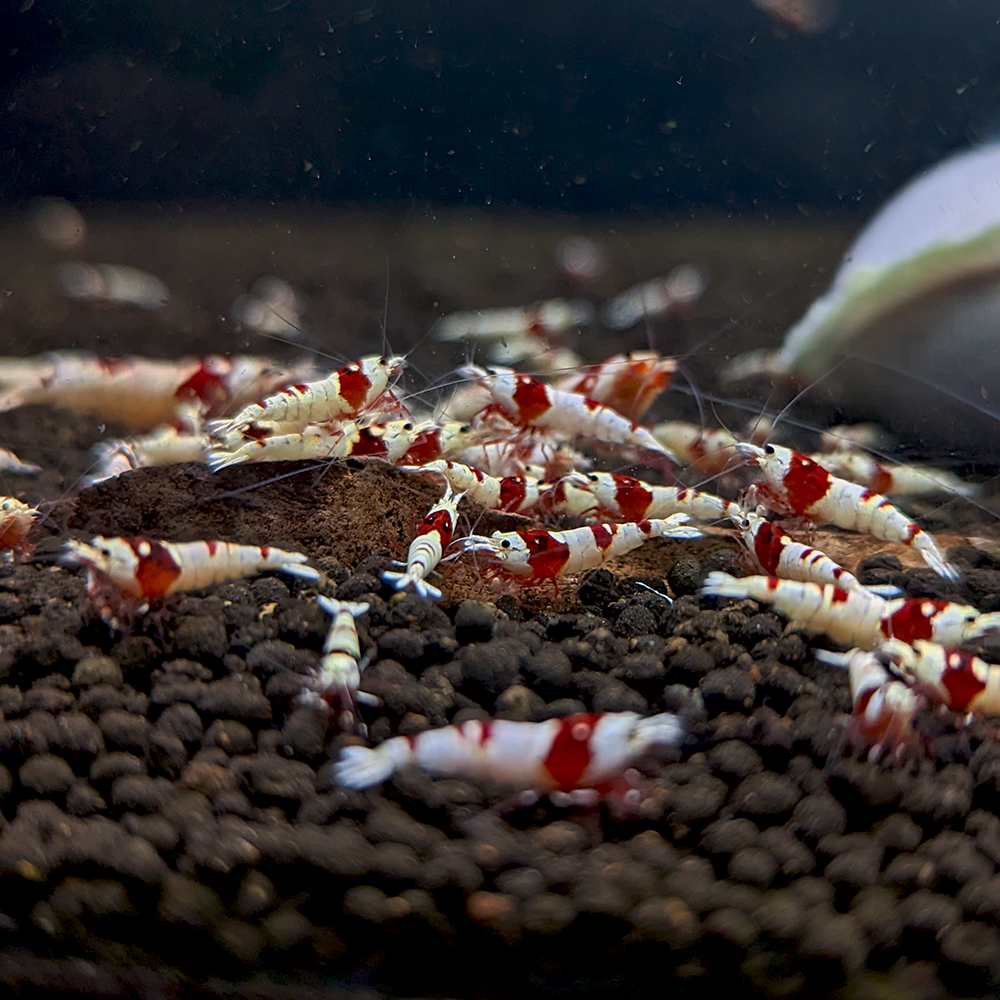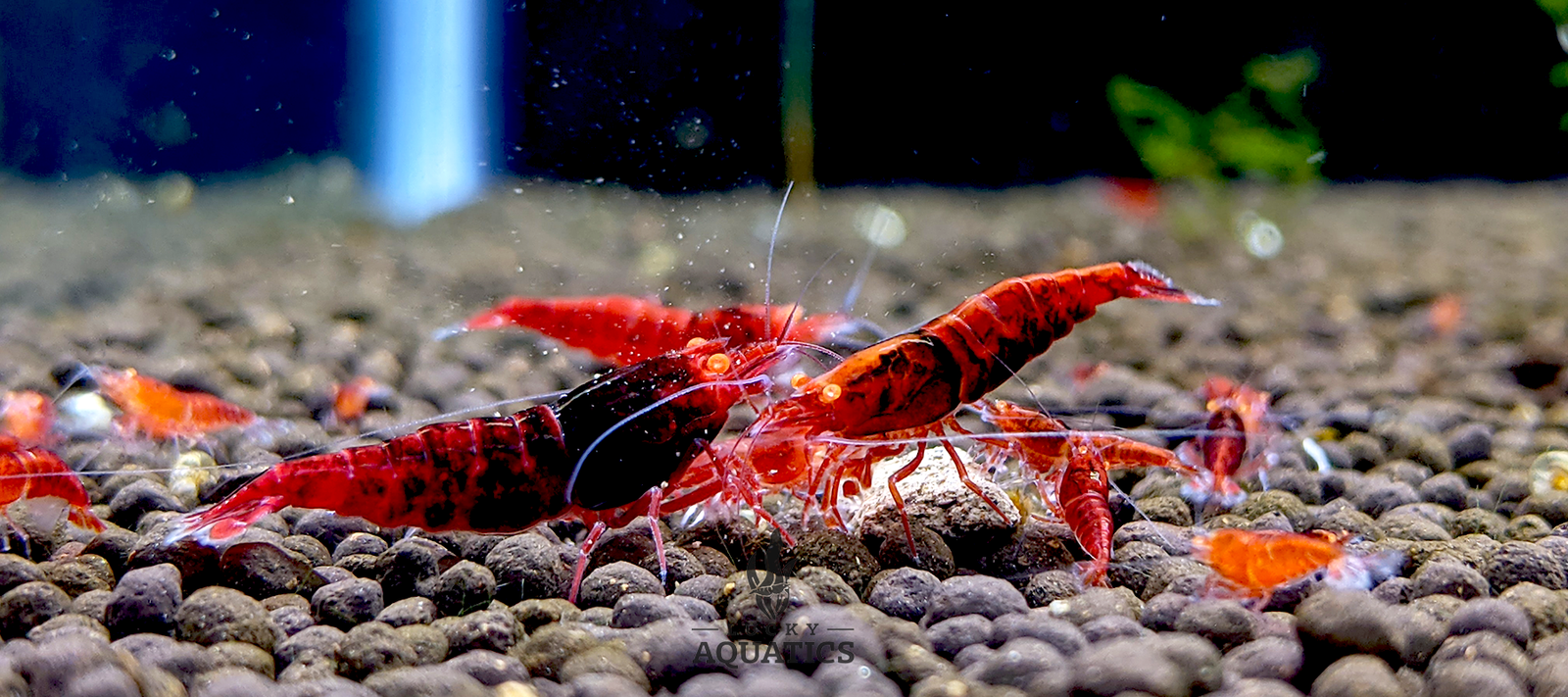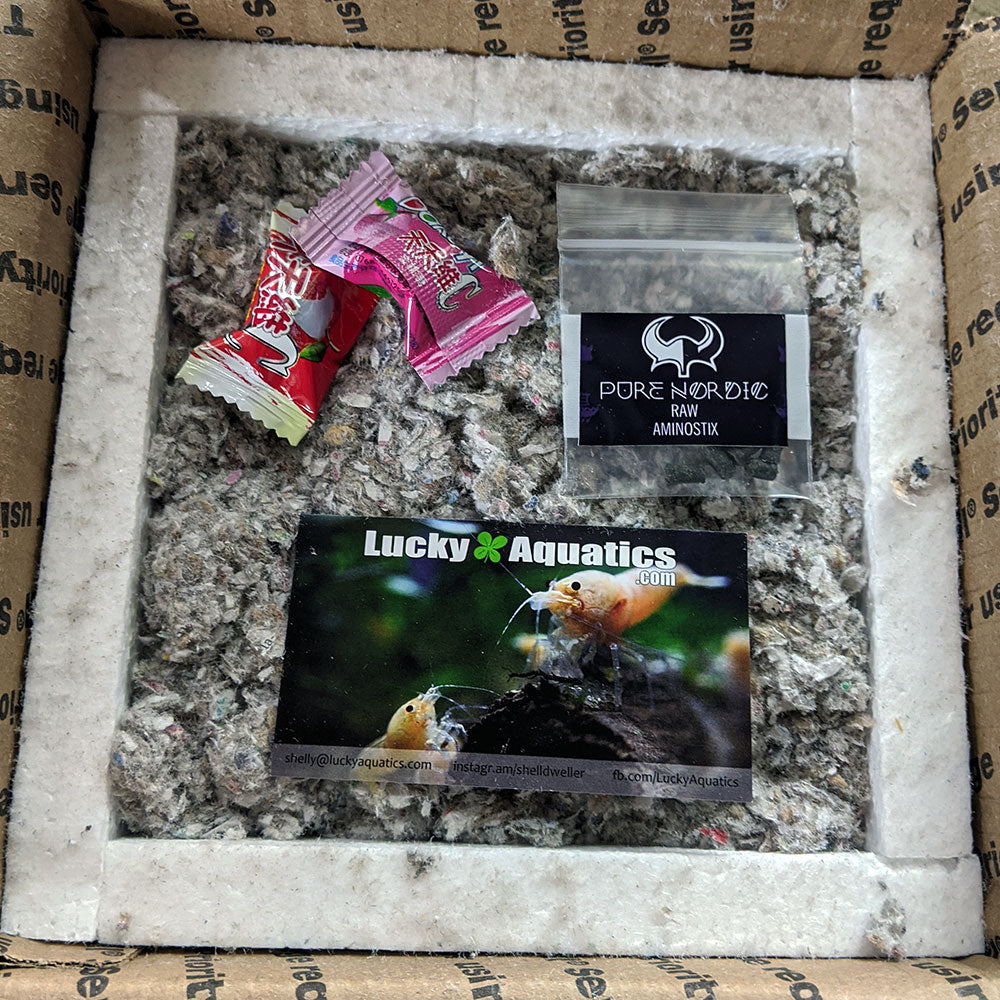Breeding Cherry shrimp is pretty easy. If you have a decent water source within their fairly large range of parameters, it's about as easy as putting a male and a female together and waiting for them to do their thing. However, there are levels to your success, and you can get a lot better results if you put in just a little more effort.
NEOCARIDINA SHRIMP SUGGESTED WATER PARAMETERS
GH: 7-9
KH: 3-5
TDS: 200-275 ppm
TEMP: 68-76 (F)
Before expecting results, your stock should be around 6 months old. That's not to say that they can't begin reproducing before that, but generally they don't learn to hold their eggs on the first try. If you can keep your parameters steady, minimal fluctuations in water quality and TDS, you're off to a good start. I generally recommend a 10% water change once a week or two weeks max. I always drip in the new water, as to slowly adjust them to the new water. I used to just pour slowly from a gallon jug, but since switching to the drip method, I have eliminated the mysterious random death here and there after water changes. Feed your shrimp a healthy, varied diet. I prefer using Pure Nordic Shrimp Food, or anything home made myself, so I know what goes in there. Healthy organic ingredients are best. Once you have healthy, happy shrimp, you are ready to start breeding your cherry shrimp.
Shrimp love two things; food and places to feel sheltered. If you can provide them with those two things, close enough to their natural habitat, you will leave little room for error. Plants are the best addition to a shrimp tank, especially moss. Moss is very important to young days-old shrimp. Its a great place to adjust to the outside world, and begin grazing on some good stuff the moss is providing. Plants will provide more surface area for biofilm to grow, which is a main staple in their diet--especially baby shrimp. Plants ALSO provide shelter...so what could be better than shelter that provides food? This is the perfect environment for breeding cherry shrimp.
Soil: Ditch the "Shrimp" soils and go with inert substrates in Cherry Shrimp tanks. I see this SO OFTEN!! Buffering soils are essential to Caridina shrimp tanks, as they buffer your water down to an acidic pH. But we are setting up a NEOcaridina shrimp tank...and NEOS do fine in alkaline water, so why waste the money? If you're using GH/KH+ or using tap/well water, you will be constantly fighting your pH and exhausting your soil extremely fast (as these soils will absorb any carbonate hardness your water might have, which carbonate hardness has a direct effect on your shrimp tank). You do not want to have fluctuations in pH in any aquarium, especially shrimp tanks.

(Bloody Mary Shrimp showing her Saddle)
Female shrimp start the breeding process when they molt. Pictured above is a female Bloody Mary Shrimp with her saddle outlined in black. This one should be ready to breed very soon. After they shed their old shell, they release a pheromone that causes all the male shrimp in the tank to go into a frenzy. They will dance all around the tank in search of the female who is now ready to reproduce. She will typically hide, in plants or under leaves, as she is fairly vulnerable after molting. Once the male finds her, they will do their dance for a few minutes, and the deed will be done Pictured below is a male and a female in the act.

(Male and Female actively breeding)
Her saddle does not immediately drop the fertilized eggs though, that takes a little bit longer. Once the saddle has moved down into the female's abdomen, all the eggs have been fertilized, and she will begin her gestation period, typically lasting an average of 21-25 days. You can tell they're about to hatch, when you can see their eyes in the eggs, as pictured below.

(Visible eyes in the shrimp eggs)
Once you have baby shrimp, all you have to do is make sure they're being fed. Like I mentioned before, moss is a great nursery for newborn shrimp. You can also add things like Indian Almond Leaves and Alder Cones to add more surface for biofilm growth. I also like to use powders such as Pure Nordic Nutridust so that there is available food all around the tank, and the babies don't have to search so hard to find their first bites. Pure Nordic BioFilm is also great, as it adds beneficial bacterias to the water, and promotes biofilm growth, to replenish the shrimps natural food source.
You will have a thriving colony of Cherry Shrimp in no time, if you follow these easy steps.




